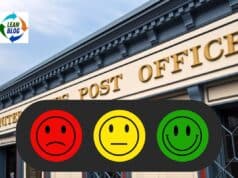In recent years, I've noticed a growing trend–one that might be well-intended, but one that could drift into unhelpful territory.
It's become fashionable in some circles to say things like,
“Red isn't bad”
or even
“Red is good.”
That's often said when referring to a KPI or project status that is not meeting targets or goals.
But let's not lose our grip on reality in the process.
If a metric is red–meaning it's outside of a desired threshold or below a target–it means something's not going well. It's OK to say, “This is red. That's not good.” The color itself isn't the problem. The bigger issue is how leaders react to red.
All too often, “red” triggers unproductive behaviors:
- yelling,
- screaming,
- blaming,
- shaming,
- panicking, or
- punishing.
Those behaviors don't help anyone improve. It especially doesn't help when individuals are held accountable for systemic issues they don't control. I wrote about this dynamic in The Mistakes That Make Us–how our response to gaps, not the gaps themselves, determines whether improvement is possible.
Let's shift from:
“Red is bad”
to
“Mad is bad”
Instead of getting mad, react in ways that can actually drive improvement. Be curious. Be helpful. Work together.
Move Beyond Red and Green
This brings me back to another idea I've shared over the years: red/green comparisons are not always the most helpful way to evaluate performance.
In Measures of Success, I discuss how overly simplistic red/green dashboards can obscure real insight. A process behavior chart provides a much clearer picture of what's really happening–whether we're seeing common cause variation or a signal worth responding to.
Too often, we jump to conclusions based on a color–“It's red, someone must have failed.” Or we draw a false sense of security from green. But red doesn't always mean things are getting worse, and green doesn't always mean we're improving.
Instead of relying on color-coded “stoplight” thinking, we need to cultivate a culture where people can speak openly about performance–and where leaders respond thoughtfully, not reactively.
Embracing Problems Instead of Hiding Them
A mentor of mine, Pascal Dennis, uses the phrase “happy talk” to describe when people try to dance around an issue because they're focused on not making people feel bad. I'm not saying we should make people feel bad. That's not the point.
Here's something Pascal wrote about former Ford CEO Alan Mulally:
Ford's Mulally: It's OK not to be OK
Let's not spin red into good. Let's not treat green as sacred. Let's treat both as starting points for inquiry — improving systems instead of just focusing on feelings.
Let's surface problems instead of pressuring people to hide them.
In a culture of fear, people are more likely to fudge the numbers to look good, instead of actually working to improve.

What's better than feeling good or even looking good? Being good. Performing good, I mean well.
Let's look at the trends, understand the systems, and ask better questions–together.
What's your organization's approach to “red”? How do your leaders respond when metrics fall short? I'd love to hear your perspective in the comments
Related Posts
Please scroll down (or click) to post a comment. Connect with me on LinkedIn.
Let’s build a culture of continuous improvement and psychological safety—together. If you're a leader aiming for lasting change (not just more projects), I help organizations:
- Engage people at all levels in sustainable improvement
- Shift from fear of mistakes to learning from them
- Apply Lean thinking in practical, people-centered ways
Interested in coaching or a keynote talk? Let’s talk.
Join me for a Lean Healthcare Accelerator Trip to Japan! Learn More









